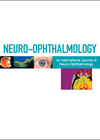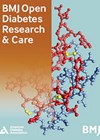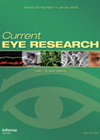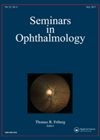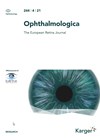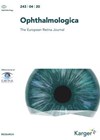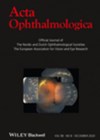
Journal Reviews
Relationship between diabetic retinopathy and cerebrovascular reactivity changes
Cerebral micro-angiopathy caused by diabetes can manifest itself as an impairment in cerebrovascular reactivity. Transcranial doppler ultrasound (TCD) is a cost-effective and non-invasive way to measure the cerebrovascular reactivity. This study aimed to assess the relationship between the grade of...
A scoping review of artificial intelligence tools for diabetic retinopathy in low- and middle-income countries
The authors conducted a scoping review to summarise the literature relating to artificial intelligence (AI) tools for diabetic retinopathy (DR) in low- and middle-income countries (LMICs). Eighty-one studies were included, following a comprehensive literature search. The majority of studies were...
Effect of heredity on risk of diabetic retinopathy
This study used survival analysis on 2199 patients who had reached vision-threatening diabetic retinopathy to investigate the contribution of heredity to diabetes together with other known risk factors for the development of either proliferative diabetic retinopathy (PDR) or diabetic macular...
FA findings in treatment-naive premature infants
This retrospective study examined fluorescein angiography (FA) images of 162 eyes of 81 treatment-naive infants with retinal vascular immaturity and persistent avascular retina (PAR) despite exceeding postmenstrual age of 60 weeks. Disc diameter (DD), optic disc-to-fovea distance (FD), the length...
Morphological and functional outcome after subthreshold laser coagulation with a frequency-doubled Nd:YAG laser
Central serous chorioretinopathy; Retinal imaging; Retinal laser coagulation
Inflammation and microvascular changes in diabetic retinopathy
Studies have shown that neurodegeneration and inflammation in the retina start early in diabetic retinopathy (DR) and can be present before the latter is clinically evident. The aim of this retrospective review of 99 diabetic patients was to evaluate retinal...
Refraction results in ROP with and without IVB
The authors aimed to compare refractive results of intravitreal bevacizumab (IVB) injection in premature neonates with retinopathy of prematurity (ROP) versus infants with spontaneous regression of ROP. The study included 87 infants (174 eyes). Group 1 included 38 infants (76...
Why is there subretinal fluid at the macula?
This is a review article looking at the differential diagnosis of subretinal fluid in the macula that could be diagnosed as central serous chorioretinopathy (CSCR). The authors have categorised them into 12 groups: neovascular diseases, vitelliform lesions, inflammatory diseases, ocular...
Correlation between aqueous flare and macular microvascular status in diabetes mellitus
The authors report a cross-sectional study which was conducted to investigate the correlation between aqueous flare and macular microvascular status, assessed by optic coherence tomography angiography (OCTA) in diabetes mellitus. Fifty-two diabetic patients with non-proliferative retinopathy, 44 diabetic patients without...
Assessment of retinal capillary VD and FAZ area in CSC using OCTA
The authors aim to report a cross-sectional, case controlled study, the purpose of which was to access the retinal capillary vessel density (VD) and foveal avascular zone (FAZ) area in acute and chronic central serous chorioretinopathy (CSC) patients compared to...
Assessing failure of laser coagulation treatment for type 1 retinopathy of prematurity
The authors present the findings of a retrospective study to examine the cause of treatment failures in type 1 retinopathy of prematurity (ROP). They reviewed the medical charts of all infants with persistent disease post laser treatment at Uppsala University...
Rebound phenomenon after IVT triamcinolone acetonide for macular oedema
In this retrospective study, the authors report the rebound phenomenon after intravitreal triamcinolone acetonide (IVTA) injection for macular oedema secondary to diabetic retinopathy (DR) and central (CRVO) or branch retinal vein occlusion (BRVO). The incidence of a rebound phenomenon was...

